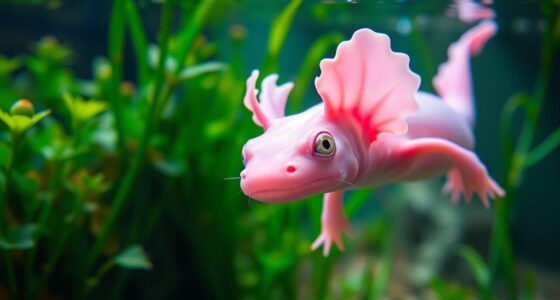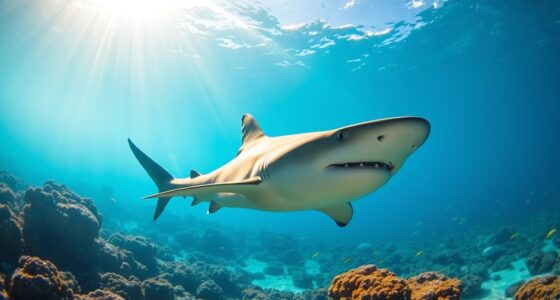Have you ever considered the fact that there are various hairless animals around the globe, each with distinctive traits and displaying uncommon appearances? From bald cats to hairless pigs, these animals have adapted to their surroundings in incredible ways, going against the usual and piquing our interest. Let’s explore the intriguing realm of hairless animals, unveiling the reasons for their lack of fur and examining the extraordinary adaptations that set them apart.
Key Takeaways:
- Hairless animals come in various species, showcasing a wide range of unique and unusual appearances.
- Genetic mutations and evolutionary adaptations contribute to the lack of fur in these bald animals.
- Hairless animals have specific traits and characteristics that help them survive and thrive in their respective habitats.
- From hairless cats to hairless pigs, each species offers a distinct perspective on the adaptability and diversity of the animal kingdom.
- Exploring hairless animals allows us to better understand the incredible resilience and ingenuity of nature.
Fascinating Hairless Cats: Sphynx Cats
Sphynx cats are a breed of hairless cats renowned for their distinctive lack of fur. This unique characteristic is the result of a genetic mutation that affects their hair follicles. Despite their apparent baldness, Sphynx cats actually possess a fine layer of downy fuzz on their bodies, contributing to their fascinating appearance.
These hairless felines have a truly distinctive and striking look that sets them apart from other cat breeds. Their smooth, hairless skin showcases their muscular build and emphasizes their sleek contours. With their large, almond-shaped eyes and wide ears, Sphynx cats exude an air of elegance and curiosity.
While their lack of fur may initially raise questions about their well-being, Sphynx cats are perfectly healthy and adaptable. Some people may associate cats with allergies caused by fur, but with Sphynx cats, that concern is significantly reduced. Their hairless coats greatly lessen the amount of allergens typically found on cat hair, making them a suitable choice for many allergy sufferers.
Sphynx cats have captured the hearts of cat enthusiasts around the world due to their affectionate and sociable nature. They crave human attention and love to cuddle up with their owners. These cats are known for their playful antics and energetic personality. With their extroverted and friendly demeanor, they make wonderful companions.
Sphynx Cat Care
Due to their lack of fur, Sphynx cats require some additional care compared to their furry counterparts. Their exposed skin makes them vulnerable to temperature changes, so they may need to be kept warm in cooler environments. Regular baths are necessary to remove the buildup of oils on their skin. Additionally, their large ears require routine cleaning to prevent wax buildup.
It’s also crucial to provide Sphynx cats with a balanced diet to maintain their overall health. Proper nutrition helps support their skin health and ensures they receive essential nutrients.
“Sphynx cats are not just hairless; they are unique beings full of love and playfulness. Their striking appearance and affectionate nature make them captivating companions.”
| Characteristic | Description |
|---|---|
| Appearance | Sphynx cats have a hairless coat with a fine layer of downy fuzz. They have a muscular build, large eyes, and wide ears. |
| Temperament | These cats are known for their affectionate and sociable nature. They are playful, energetic, and form strong bonds with their human companions. |
| Care | Sphynx cats require regular baths to remove oils from their skin and routine ear cleaning. They also need protection from extreme temperatures. |
The Peculiar Naked Mole Rats: Blind, Deaf, and Low Metabolic Rate
Naked mole rats are intriguing hairless rodents that live in underground colonies. They are completely bald animals, with wrinkly pink skin covering their bodies. Despite their lack of fur, naked mole rats have unique adaptations that allow them to thrive in their subterranean habitats.
One of the most striking characteristics of naked mole rats is their blindness and deafness. These rodents rely on other senses, such as touch, smell, and vibrations, to navigate their dark tunnels. Their eyes are tiny and covered by a layer of skin, rendering them functionally blind. Similarly, their ears are also small and lack external openings, resulting in limited hearing abilities.
Another remarkable adaptation of naked mole rats is their remarkably low metabolic rate. These rodents have a slow metabolism, which allows them to survive on very little food. In fact, naked mole rats can go for hours without oxygen, thanks to their ability to switch from aerobic to anaerobic metabolism. This unique adaptation enables them to withstand the low-oxygen environment of their underground burrows.
Additionally, naked mole rats exhibit a lack of pain sensitivity, making them interesting subjects for scientific research. They do not feel the same pain sensations as other animals do, which has piqued the curiosity of scientists studying the mechanisms behind pain perception.
Moreover, naked mole rats possess an extraordinary resistance to cancer. Unlike other mammals, naked mole rats rarely develop tumors, and their cells have built-in defenses against cancer. This special ability has captured the attention of researchers, as they hope to uncover the secrets of the naked mole rats’ natural resistance, potentially leading to advancements in cancer treatment and prevention for humans.
Peculiar Characteristics of Naked Mole Rats:
- Blindness and deafness
- Low metabolic rate
- Lack of pain sensitivity
- Resistance to cancer
The unique adaptations and remarkable qualities of naked mole rats demonstrate the incredible diversity of the animal kingdom. Despite their hairless appearance, these bald rodents have evolved fascinating capabilities that enable them to thrive in their underground world.
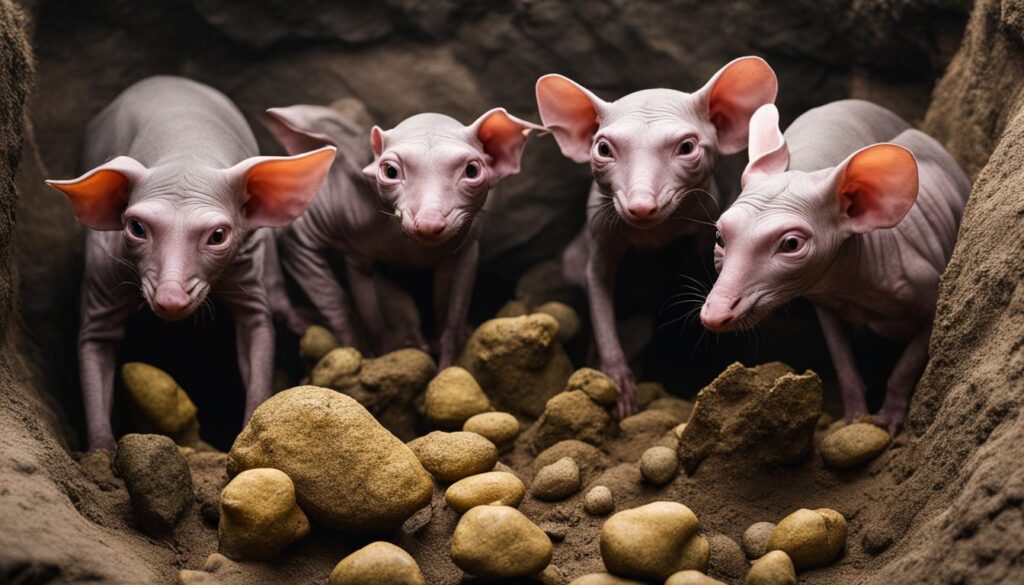
Chinese Crested Dogs: Bald Beauties
Chinese Crested Dogs are a breed of hairless dogs known for their bald appearance. These unique canines have captured the hearts of many dog lovers with their unusual hairless coat. The striking baldness of Chinese Crested Dogs is a result of a recessive gene that affects the development of their hair follicles.
While some individuals of this breed may have patches of fur, most Chinese Crested Dogs exhibit a hairless coat that sets them apart from other dogs. Their smooth and soft skin showcases their delicate and elegant nature.
Despite their lack of fur, Chinese Crested Dogs are not cold or distant. On the contrary, they are known for their affectionate and loving nature towards their owners. These gentle creatures form strong bonds with their humans and thrive on companionship.
If you’re considering adding a Chinese Crested Dog to your family, be prepared for a deeply devoted companion who will shower you with affection and attention. Their hairless coat may require some special care to protect their sensitive skin, but the bond you’ll develop with one of these bald beauties will make it all worth it.
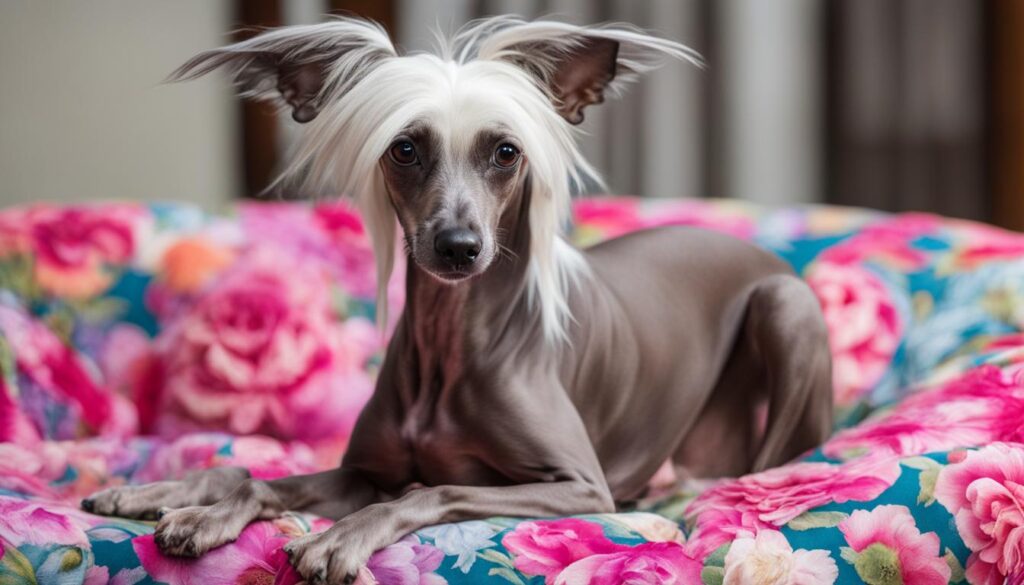
The Adorable Skinny Pigs: Almost Completely Hairless
Skinny pigs, also known as hairless guinea pigs, are almost completely hairless due to a unique genetic mutation. These adorable creatures have captured the hearts of many animal lovers with their distinctive appearance and charming personalities.
Unlike their furry counterparts, skinny pigs have a sparse covering of short, soft fur on their head, feet, and legs. However, the rest of their body is bald, exposing their smooth and delicate skin. Despite their lack of fur, skinny pigs are incredibly cute and photogenic, captivating the attention of anyone who crosses paths with them.
One fascinating aspect of skinny pigs is their unique genetic mutation that causes hairlessness. This genetic variation sets them apart from other guinea pig breeds and contributes to their striking appearance. Their smooth skin allows their friendly personalities to shine, making them affectionate and playful companions.
These tiny hairless creatures thrive in a social and interactive environment. They require regular playtime and companionship to keep them mentally stimulated and happy. Skinny pigs are also known for their intelligence, curiosity, and ability to bond closely with their human owners.
If you’re considering adding a skinny pig to your family, it’s important to note that they have specific care needs. Due to their lack of fur, they are more susceptible to temperature changes and require a warm and cozy living environment. Additionally, their delicate skin requires regular moisturizing and protection from excessive sunlight.
Fun Facts about Skinny Pigs:
- They are naturally hypoallergenic, making them a great choice for individuals with allergies to pet dander.
- Unlike other guinea pigs, they lack a layer of fat beneath their skin, making them lighter and easier to handle.
- They have a high metabolism and require a diet rich in fresh fruits, vegetables, and hay.
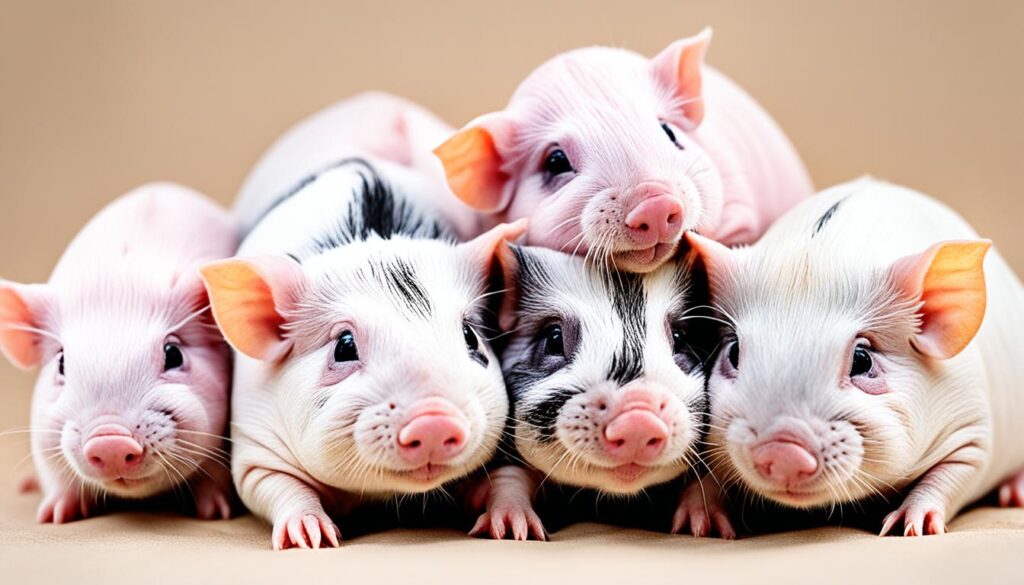
Skinny pigs are unique and captivating creatures that bring joy and laughter into the lives of those who care for them. They are a delightful reminder of the extraordinary diversity found within the animal kingdom.
| Traits | Description |
|---|---|
| Appearance | Bald body with some fur on the head, feet, and legs |
| Personality | Affectionate, intelligent, and social |
| Care Needs | Warm and cozy living environment, regular moisturizing, protection from excessive sunlight |
| Unique Features | Naturally hypoallergenic, lighter in weight, high metabolism |
Xoloitzcuintlis: Mexican Hairless Dogs with Unique Varieties
Xoloitzcuintlis, also known as Mexican hairless dogs, are an ancient breed with distinct hairless and coated varieties. These dogs have been cherished by the Mexican culture for centuries and have become symbols of loyalty and companionship.
The hairless variety of Xoloitzcuintlis is characterized by its smooth, hairless skin with only a few hairs on the head, tail, and feet. These dogs have a unique appearance and are often described as elegant and graceful. Despite their lack of fur, they are surprisingly resilient to extreme temperatures.
On the other hand, the coated variety of Xoloitzcuintlis has a short, sleek coat that comes in various colors. This variety provides a striking contrast to the hairless dogs and showcases the breed’s versatility in terms of appearance.
Both the hairless and coated varieties of Xoloitzcuintlis possess friendly and intelligent personalities. They are known to form strong bonds with their owners and are highly adaptable to different living environments. Xoloitzcuintlis thrive on human companionship and make excellent family pets.
Whether you prefer the unique allure of the hairless Xoloitzcuintli or the sleek beauty of the coated variety, these Mexican hairless dogs are sure to make a lasting impression as loyal and loving companions in your life.
The Fascinating Babirusas: Hairless Pigs with Distinctive Tusks
Babirusas, native to Indonesia, are hairless pigs with a unique appearance. While they are not completely hairless, their bodies are covered in short and sparse fur that doesn’t fully conceal their skin. What makes these creatures truly fascinating are their distinctive tusks that grow upward from their upper canine teeth.
The babirusa’s tusks, which are unique among pigs, can grow to be quite long and curved. These tusks continue to grow throughout their lives and can reach impressive lengths. Despite their fierce appearance, babirusas are primarily herbivores and use their tusks for defense, dominance displays, and to dig for food.
The babirusa’s tusks are not only visually striking but also serve important functions. They play a role in their social interactions and help them navigate their forest environments by clearing vegetation and digging for roots. Additionally, the tusks are used during fights between males, where they engage in head-on clashes to establish dominance and secure their place in the social hierarchy.
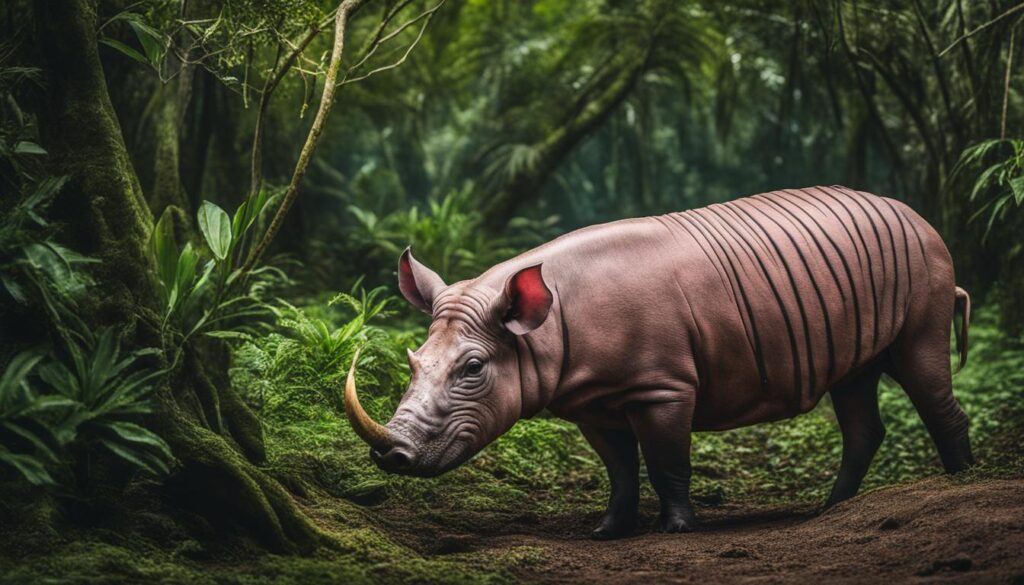
Unusual Behaviors
Babirusas display a range of unusual behaviors that make them even more captivating. They are highly agile and adept at navigating the dense forests where they reside. These pigs have been observed climbing trees and even swimming across rivers in their search for food.
In addition, babirusas have an extraordinary sense of smell. They possess a specialized organ called the “vomeronasal organ” that allows them to detect chemical signals, aiding in their search for potential mates, food, and territory.
Babirusa Conservation
Despite their intriguing characteristics, babirusas face threats to their survival. Habitat loss due to deforestation, hunting for their tusks, and competition with invasive species are some of the challenges they encounter.
Efforts are being made to protect babirusas and conserve their natural habitats. Conservation organizations work with local communities to raise awareness and implement sustainable practices that ensure the long-term survival of these fascinating animals.
| Key Facts about Babirusas | |
|---|---|
| Scientific Name | Babyrousa spp. |
| Main Habitat | Forests |
| Diet | Herbivorous |
| Tusks | Distinctive upward-curving tusks |
| Conservation Status | Vulnerable |
Babirusas are captivating creatures with their hairless appearance, distinctive tusks, and unusual behaviors. They serve as a reminder of the incredible diversity found within the animal kingdom and the importance of protecting these unique species.
The Majestic African Elephants: Mostly Hairless Giants
The African elephants, known as the largest land animals, possess mostly hairless bodies. While they do have sparse hair on their heads and tails, the majority of their massive frames are devoid of fur. Instead, their bodies are covered in thick, wrinkly skin, which acts as a protective layer against the elements.
The unique adaptations of African elephants go beyond their hairlessness. Their thick skin not only provides defense against external factors but also helps them regulate their body temperature more efficiently. It serves as a natural defense against the scorching heat of the African savannah and helps retain moisture, preventing dehydration.
Furthermore, the African elephant’s skin is a remarkable organ that plays a vital role in communication. These majestic creatures use their skin to communicate through tactile sensations and touch. With their sensitive skin, they can feel subtle vibrations and receive messages from other elephants.
“The African elephant’s thick, wrinkly skin is not just a physical attribute. It is a testament to their strength, resilience, and adaptation to their environment.”
The Strength of the Skin
The skin of African elephants has several unique features that contribute to their survival in the African wilderness. It protects their bodies from the harsh sun, insect bites, and injuries caused by branches and thorns. African elephants also have sweat glands in their skin, which allow them to cool down and regulate their body temperature.
Additionally, the skin of African elephants functions as a shield against parasites. These magnificent creatures often take mud baths, coating their bodies in a protective layer of mud. The mud, when dried, acts as a natural barrier against ticks and other parasites, preventing infestations and diseases.
Longevity and Beauty
The thick, wrinkly skin of African elephants not only serves practical purposes but also adds to their majestic beauty. The wrinkles on their bodies are unique to each individual and are often likened to fingerprints. These distinctive patterns make every African elephant one of a kind.
To fully appreciate the grandeur of African elephants, observe their magnificent skin up close:
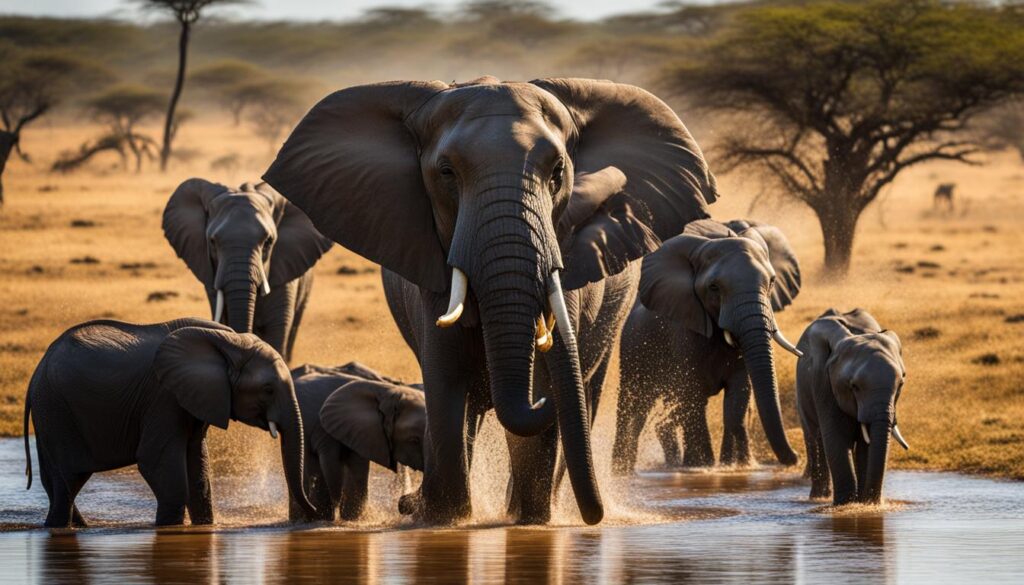
| Physical Features | Details |
|---|---|
| Size | African elephants are the largest land animals, with males weighing up to 12,000 pounds (5,400 kg) and standing up to 13 feet (4 meters) tall at the shoulder. |
| Color | Their skin color can vary from gray to brown, depending on the subspecies and the environment in which they live. |
| Texture | The skin of African elephants is rough and thick. As they age, it becomes more wrinkled, adding to their distinguished appearance. |
The African elephants’ hairless bodies and thick, wrinkly skin are vital to their survival in their natural habitat. These unique adaptations enable them to thrive in the African wilderness, making them not only awe-inspiring giants but also symbols of strength and beauty.
Peruvian Inca Orchids: Hairless Dogs with Unique Skin
Peruvian Inca Orchids are a captivating breed of hairless dogs known for their soft, pliable skin that comes in various colors. These dogs have a velvet-like appearance that is both intriguing and visually appealing. While they are mostly hairless, some Peruvian Inca Orchids may have wisps of hair on their heads, adding to their distinctiveness.
This unique breed is highly regarded for its alertness and intelligence, making them excellent watchdogs. Their soft, pliable skin is a characteristic that sets them apart from other breeds, providing a different tactile experience for owners. Due to their hairless nature, Peruvian Inca Orchids require minimal grooming, making them an ideal choice for individuals seeking low-maintenance pets.
Key Characteristics of Peruvian Inca Orchids:
- Soft, pliable skin
- Various colors
- Velvet-like appearance
- Intelligent and alert
- Low grooming requirements
Peruvian Inca Orchids are not only unique in their physical attributes but also in their temperament. They form strong bonds with their owners and are known to be fiercely loyal companions.
Peruvian Inca Orchids are like a work of art, with their stunning skin and captivating presence. They are a testament to the rich diversity of dog breeds and the beauty that can be found in the absence of fur.
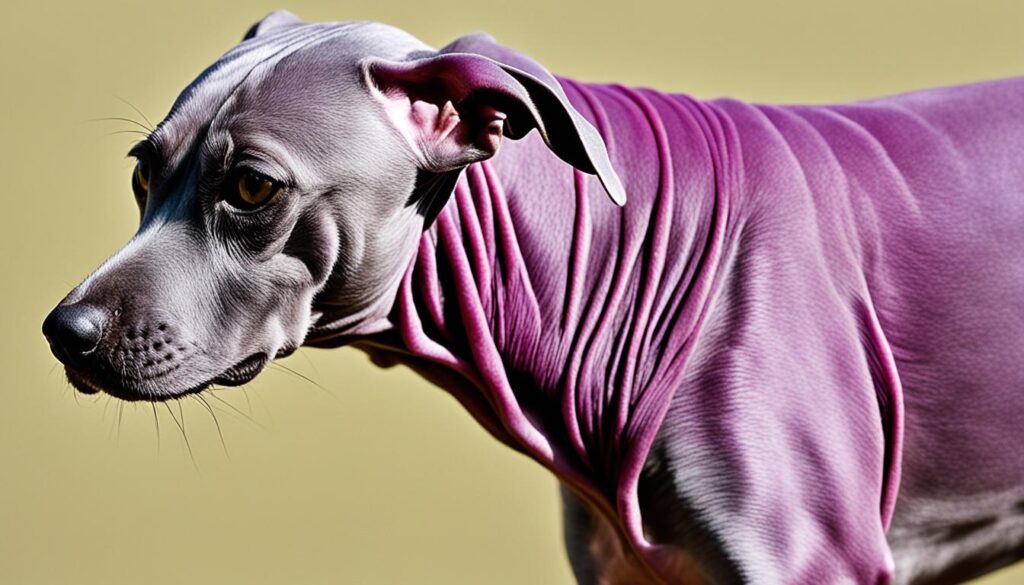
| Key Features | Description |
|---|---|
| Soft, pliable skin | Peruvian Inca Orchids have delicate skin that is a pleasure to touch. It has a unique texture that feels soft and pliable, reminiscent of velvet. |
| Various colors | These dogs come in a variety of colors, including but not limited to black, brown, gray, and white. Each color variation enhances their visual appeal. |
| Velvet-like appearance | With their hairless bodies and soft skin, Peruvian Inca Orchids exude a velvet-like appearance that is captivating and elegant. |
| Intelligent and alert | Peruvian Inca Orchids are highly intelligent and alert, making them excellent watchdogs. They are quick to notice any changes in their surroundings. |
| Low grooming requirements | Due to their lack of hair, Peruvian Inca Orchids have minimal grooming needs compared to other breeds. Regular baths to keep their skin clean is typically all that is required. |
Dolphins: Hairless Marine Mammals
Dolphins are highly intelligent and graceful marine mammals that possess streamlined bodies and lack fur or hair. Their unique adaptations allow them to thrive in their oceanic habitats.
With their sleek and streamlined bodies, dolphins are perfectly designed for life in the water. They have evolved to be incredibly fast swimmers, reaching speeds of up to 20 miles per hour. Their hairless bodies reduce drag and allow them to move effortlessly through the water, making them one of the most agile creatures in the ocean.

Magnificent Adaptations
Beneath their smooth and rubbery skin, dolphins possess a layer of blubber that provides insulation and buoyancy. This layer of blubber helps regulate their body temperature and enables them to stay warm in cold ocean waters. Additionally, their hairless bodies are more hygienic in an aquatic environment, as it prevents the accumulation of parasites or debris that could impede their swimming abilities.
The remarkable intelligence of dolphins allows them to communicate, navigate, and hunt in a complex underwater world. They use a sophisticated system of clicks, whistles, and body movements to communicate with each other, demonstrating their advanced social behaviors and cooperative hunting techniques.
Protecting these Marvelous Creatures
Dolphins play a vital role in marine ecosystems and are a symbol of the beauty and diversity of our oceans. However, they face numerous threats, including habitat loss, pollution, climate change, and accidental entanglement in fishing gear. It is essential to protect these magnificent creatures and their natural habitats to ensure their survival for future generations.
“Dolphins are not just highly intelligent creatures, but they also possess a unique beauty and grace that captivates all who encounter them.”
Dolphin Species
| Dolphin Species | Habitat | Size | Conservation Status |
|---|---|---|---|
| Common Dolphin | Oceans worldwide | Approximately 6-8 feet | Least Concern |
| Bottlenose Dolphin | Oceans worldwide | Approximately 8-12 feet | Least Concern |
| Spinner Dolphin | Tropical and subtropical waters | Approximately 5-7 feet | Least Concern |
| Killer Whale (Orcas) | Oceans worldwide | Up to 30 feet | Endangered |
These are just a few examples of the diverse dolphin species found across the globe. Each species has its own unique characteristics and adaptations that make them fascinating and essential components of marine ecosystems.
Conclusion
Throughout the animal kingdom, hairless animals exhibit unique characteristics and adaptations that distinguish them from their furry counterparts. From the playful Sphynx cats to the majestic African elephants, these bald creatures have evolved in diverse ways to overcome the challenges posed by their lack of fur.
Each species of hairless animal possesses its own set of remarkable traits. For example, Sphynx cats, with their genetic mutation that affects hair follicles, have a distinct appearance and a fine layer of downy fuzz. Naked mole rats, blind and deaf with a low metabolic rate, thrive in underground colonies. And Chinese Crested Dogs, with their recessive gene, showcase a bald beauty that sets them apart.
These hairless animals have developed adaptations that allow them to thrive in their respective environments. From their thick, wrinkly skin in African elephants, which acts as a protective layer, to the streamlined bodies of dolphins, hairless creatures have found unique ways to compensate for their lack of fur. These adaptations highlight the incredible diversity found within the animal kingdom.
In conclusion, hairless animals deserve recognition for their fascinating traits and remarkable adaptations. Their bald appearances may be unconventional, but they serve as a reminder of the incredible variety of life on Earth. Whether they are cats, dogs, pigs, or marine mammals, hairless animals stand out as truly extraordinary examples of adaptation and survival.





